This week I’m visiting some of my local garden centers and nurseries to try to determine what plants I’m going to buy to put in my garden this year. So join me as I show you some of the tips that I use in picking the right plants.
But I do buy some to transplant in spring and that’s what I’m doing today, is starting to look at some of the plants that I might want to buy. One of the very first things I do when I see a plant is look at the plant tag. A good plant tag tells you everything you need to grow. First off, of course, what the plant is.
But how much sun it requires. And usually on the back it’ll tell you all the needs: water, how big the plant gets, which can be quite important, and I always look specifically at the zone, especially for perennials because I want to make sure that I can grow it in my garden. If it’s an annual like this one, it’ll say non hardy below 32° and even if it doesn’t say annual anywhere on the tag like down here where it says mounding annual, if it won’t grow below 32°, you can consider it to be an annual.
Look for banners at the front of flats . They’ll give you a lot of information about the plants too. Or you can look at the individual tags Those might not be as in-depth as a lot of the perennial pots that you’ll buy, but it does include some important information. Many of the big-box stores will get their plants from regional greenhouses.
So even though my area might be zone 5 the plants might be grown and distributed to nearby areas that are zone 6 or zone 7. So that’s a primary reason why I check the plant tags because I want to make sure the plants, the perennials in particular, will survive in my zone. Here’s an example of a plant that’s being sold as a perennial in my garden center But if you look at the zone its zone 7 only go down to 0 degrees.
It can handle freezing but not my winters. Here’s another one, a nice lavender. When you look at it, I see that it’s zone 6. So if I were to put this in a perfect location, a little microclimate in my garden, it might survive some of our harsh winters, but it’s probably best to just move on and find something else.
At your local nursery you’re less likely to have a problem with plants outside your zone because typically they’re going to be growing most of the plants themselves. But it’s still something to look for. Plants are probably going to be laid out differently in a nursery as well I like walking up and down the rows inside these little greenhouses to see what they have, but you can expect that the plant tags will be much different.
You may only have one sign for a whole bunch of plants. It’s important to look at a tag thoroughly. Note that this is a Royal Purple Smoke Tree, which implies it’s going to be big. And the size says that. It reaches 15 feet tall and 10 to 12 feet wide. But if you go to the nursery you might find something a little different like this smoke bush.
Well, it’s really not a bush. It’s the same plant and a 15 feet high and 10 to 15 feet wide Now I do encourage that you have a plan when it comes to planting but Even I just come to the garden centers and nurseries to see what’s available. I might have a spot that’s in the sun and all I’m looking for is a plant that will grow in the sun.
Or if it’s a shady area I want to see what plants are available for shady spots. I might have some ideas about specific plants, but I just love going and looking at plants and maybe discovering something that I didn’t even know I wanted. I’ll wander the aisles and then when I see something I like and look at the plant tag to make sure that I can grow it, I look closer to see if there’s any damage on the outside of the leaves or more importantly the inside of the plant.
I want to look at the overall condition of the plant to see what kind of shape it’s in. One of the things that I’ll look for specifically is insect damage. If you see lots of little holes or lots of discolored areas it’s probably insect damage and you want to stay away from it. You may or may not be able to see the little insects that cause this damage.
If there’s a whole bunch of plants all next to each other and all of them have the same damage It’s probably insects Don’t bring these insects home by not buying these plants look someplace else You’ll be able to tell whether they’ve been taking care of the plants by looking to see how well they’ve been watered.
If they all look good then that’s probably a good indication they’re being taken care of. But if some of the ones on the bottom or maybe on the inside of the shelves don’t look so good, then maybe that’s just because they’re only watering the top and they’re not looking at every single plant’s well-being.
It’s not unusual to see some wilting if the plants are in the sun during the heat of the day. If you see a whole section of plants that are wilted in a sheltered area or the shade it’s probably a big problem. So I’ll stick my finger in the pot to check the moisture level. If it’s really dry, walk away.
These plants are in direct sunlight and you can see damage on the leaves The soil is pretty dry, but the plant itself is still in pretty good shape you can see it’s green and growing and I’ve used this to my advantage because You might be able to get a discount from the manager and if there’s two plants growing in a pot you not only get two for the price of one but you might get two for less than half price.
And check the clearance section if they have one because a lot of those damaged plants go for clearance prices. And you might find bargains, but you might also find a bunch of dead plants so be sure and look through them quite thoroughly and don’t just pay a bargain price to get a dead plant. Here are some small lemon trees that probably sustained some freeze damage recently.
There’s no bargain here. These plants are all brown completely dead walk away It’s nice to look at all the pretty flowers But when you buy something to put in your landscape, you might not want to choose the one that’s loaded with flowers. Many plants have a limited number of buds that will turn into flowers.
And so if you buy them already flowering you’ll miss out. So look for unopened flowers to get the biggest bang for your buck, or better yet, find a plant that has no flowers yet. The buds have yet to open. You’ll have a much longer bloom period It is okay to get annuals that are already flowering because they’ll add instant color to your garden.
So I’ll still look for plants like this one where the blooms aren’t fully developed But go ahead and get some that are already in full bloom just to jumpstart the color in your garden. It’s tempting to get a plant that already has fruit growing because you think you might be getting a head start.
But it’s just the opposite. This plant has already put a lot of energy into flowers and fruiting. I’d rather get a plant that hasn’t done that yet so when I put it in the garden, all of its energy will be going towards root development. You should also look at the roots at the bottom of the pot because you may find if there’s roots growing out of the bottom like in this one this has probably been in this pot a long time and you may want to choose a plant that doesn’t have roots that are filling the pot.
Instead, roots that’ll have a chance to grow in your garden. Sometimes the roots aren’t growing a lot outside, just a little bit, and you can actually just squeeze the pot and then separate it from the pot. So look on the inside and really look. These roots have really wrapped around quite a bit, so, it’ll require some separating of the roots and pruning before I put it in the ground, but I may move on to something else.
By thoroughly checking the plant tag, inspecting the plant for insects, looking at the blossoms and the fruit, inspecting the roots, when it’s all said and done you’ll probably have good success with your plants. And of course be on the lookout for those bargains. In a nursery you’ll probably see plants side by side.
These little pots and little tomatoes are inexpensive But right next door are big tomatoes in the same size pot. That’s a bargain. They’ll go in the ground They’ll do very well and I’ll have saved money by buying these smaller pots. And if you look for two tomatoes in a pot you’re getting two plants for the price of one.
And there you have it some of the things I look for when choosing my plants from a nursery or garden center. If you have any comments or questions please let me know below. If you want to see more of these articles, please then subscribe. If you liked the article you can give me a comment up and share it.
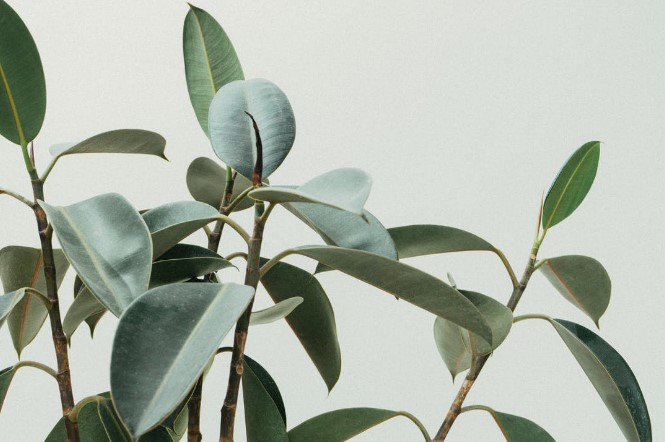



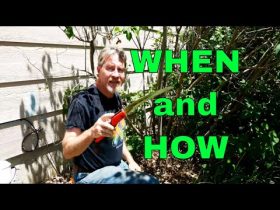

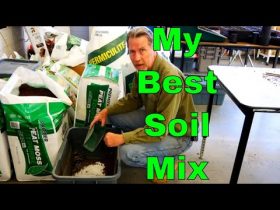
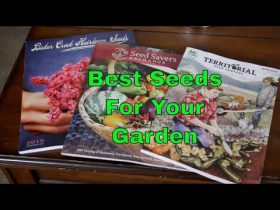


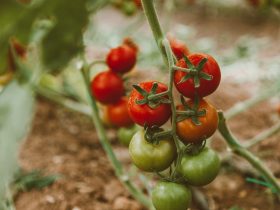
Leave a Reply